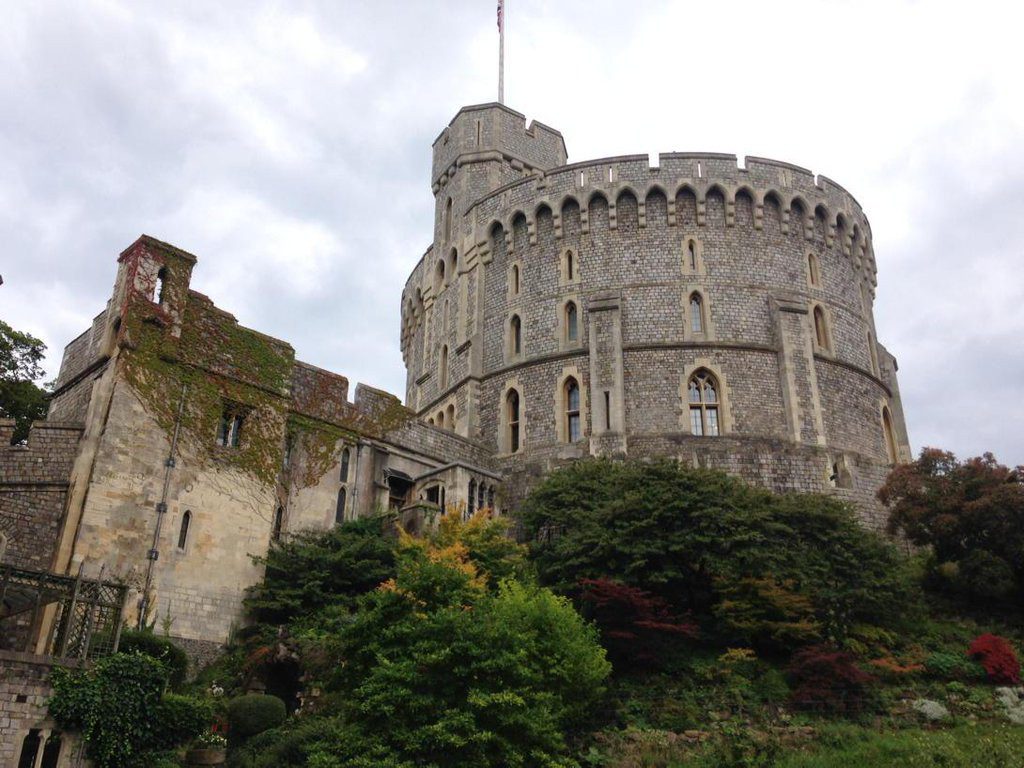James Ambuske on researching George III's papers in the Royal Archives
James Ambuske, University of Virginia, was the inaugural Omohundro Institute Georgian Papers Fellows and spent last September researching at the Royal Archives.
In 1768, the Philadelphia physician Benjamin Rush toured the House of Lords during a visit to London. He persuaded his guide to allow him to sit upon George III’s throne, an experience that deeply moved him. I lay no claim to Rush’s brilliance, but I did share in his sense of awe each morning as I climbed the stone steps leading into the Round Tower at Windsor Castle, sat down at a simple wooden desk, and read through the papers of America’s last king.

My dissertation explores how Scottish emigration to the colonies in the era of the American Revolution shaped perceptions of the British Empire’s purpose amidst a transatlantic constitutional crisis. Much of my research centers on how American proprietors, Scottish landlords, promoters of emigration, and the King’s ministers contested the broader imperial implications of this phenomenon. George III’s position, although often hinted at in the correspondence of government officials, consistently eluded me. Serving as the Omohundro Institute’s inaugural Georgian Papers Project Graduate Fellow, in conjunction with the Royal Archives and King’s College of London, gave me the opportunity to rummage gently through George III’s personal letters and private thoughts about British America.
I found some of the answers that I sought and discovered material in the archive, the Royal Library, and the Print Room that raised new questions about the American War for Independence. Within the King’s calendared correspondence, for example, there exist copies of nearly 100 unpublished enclosures detailing the ministry’s mobilization and intelligence gathering efforts in the summer of 1775. The letters illuminate the government’s struggle to send Major General Thomas Gage sufficient cash and provisions, and augment British forces with Hanoverian troops, in order to crush the rebellion swiftly. Their presence in the collection point to George III’s intense interest in this process and the role he played in prosecuting the war.
The most rewarding finds were the materials that humanized the regal portraits of Georgian women and men. The tender affection that Queen Charlotte and George III felt for one another pervades their correspondence, as does her great intellect and the self-doubt that they both expressed as parents. Should you have need for a “gout cordial,” require “soap for the hounds,” or have guests expecting “giblet soup” and “ginger bread nutts” for dinner, then you will find these recipes and more among the Georgian Papers. We’ll be skipping the Christmas ham this year in favor of “Green Pea Soup without Meat or Water.”
But the chance to collaborate with the Royal Archivists made my tenure in Windsor especially meaningful. We discussed the future direction of Georgian studies and strategized about capturing digital metadata during many conversations in the reading room or over a pint of ale. This sense of partnership encouraged me to create a simple calendar of the above-mentioned enclosures for the archivists that I hope will benefit the project as well as future scholars.
I am grateful to the Omohundro Institute for the opportunity to study in Windsor Castle.
This post and others also appear on our sibling GPP site at the Omohundro Institute.
